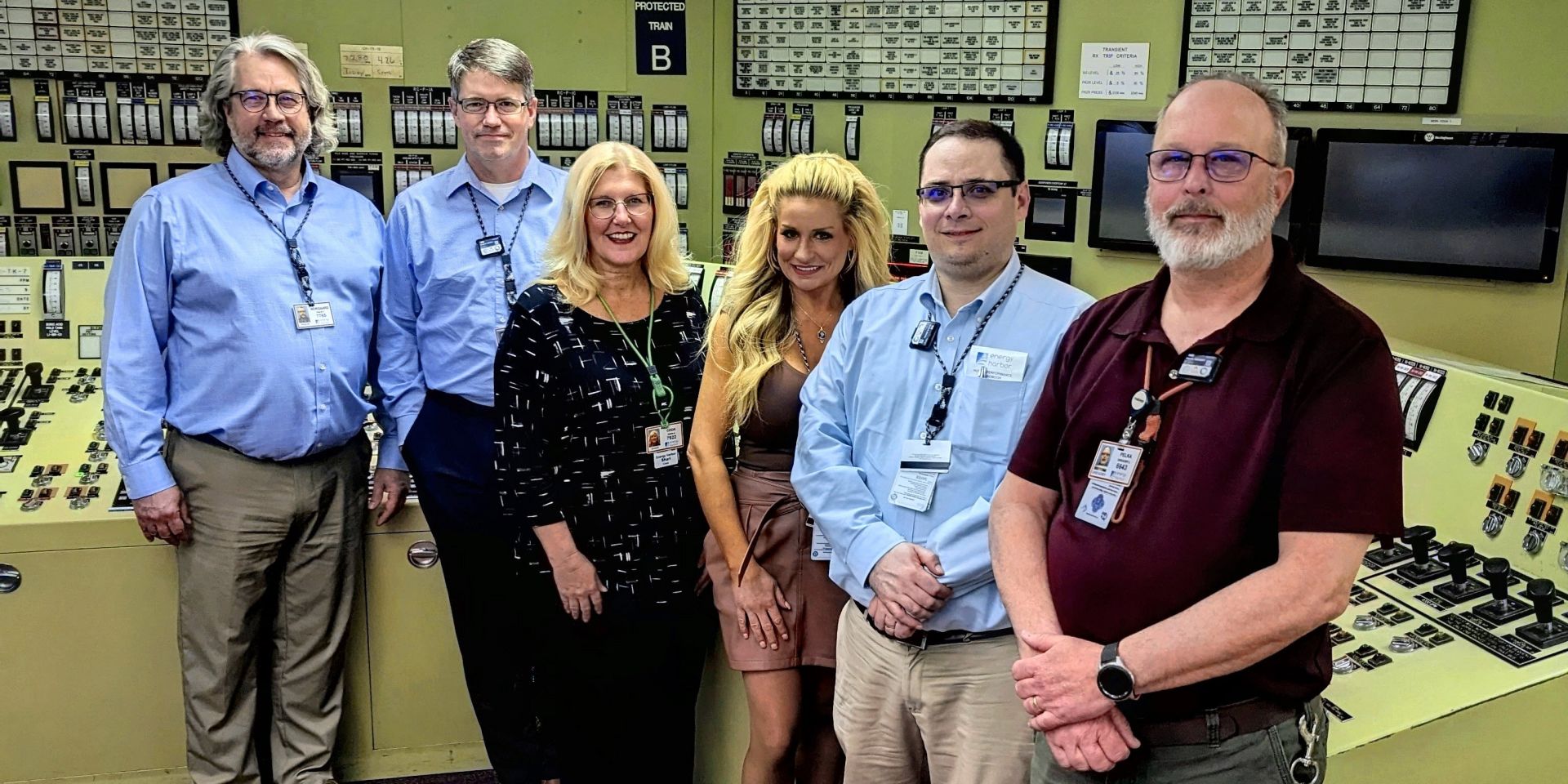A fuel rod is loaded into the core of PRR-1 SATER in this 2022 photo, in preparation for its operation. (Photo: PNRI)
The Philippines generates none of its electricity from nuclear energy. Until recently, it was even without a functioning research and training reactor. The lack of a nuclear facility has led to a dearth of scientific expertise in nuclear science and nuclear engineering in this nation of roughly 117 million people. Twenty-nine-year-old Ronald Daryll E. Gatchalian is on a mission to change that.
IAEA director general Rafael Mariano Grossi welcomes participants at the annual session of the IAEA’s Nuclear Law Institute. (Photo: Dean Calma/IAEA)
As countries increasingly plan to adopt or expand nuclear energy to their energy grids, the importance of national and international nuclear law was underscored in recent remarks by Rafael Mariano Grossi, the International Atomic Energy Agency’s director general.
Comic books and cartoon characters began to be used to provide information and propaganda about nuclear weapons and energy in the 1940s. Items in the exhibition include True Comics #47 (1946), Bert the Turtle Says Duck and Cover (1951), The Mighty Atom, Starring Reddy Kilowatt (1959), and The H-Bomb and You (1955). (Photo: National Museum of Nuclear Science and History)
For many of us, the toys of our childhood leave indelible marks on our consciousness, affecting our long-term perceptions and attitudes about certain things. Hot Wheels may inspire a lifelong fascination with fast, flashy automobiles, while Barbies might shape ideas about beauty and self-image. For the generation who grew up during the Atomic Age—the post–World War II era from roughly the mid-1940s to the early 1960s—the toys, games, and entertainment of their childhoods might have included things like atomic pistols, atomic trains, rings with tiny amounts of radioactive elements, and comic books, puzzles, and music about nuclear weapons.
Congressional staffers gathered for a talk on nuclear weapons and nonproliferation as part of the ANS Nuclear Energy 101 program.
Class was back in session this spring when, after a hiatus, the American Nuclear Society hosted its third session of Nuclear Energy 101 in Washington, D.C., for congressional staffers. This five-course educational series is a wonderful—and popular—tool for ANS to network with congressional staff and explain the basics of nuclear science and technology.
ACU’s grand opening event for the Gayle and Max Dillard Science and Engineering Research Center. (Photo: ACU)
Abilene Christian University’s Gayle and Max Dillard Science and Engineering Research Center (SERC) has opened. SERC contains the Nuclear Energy eXperimental Testing Laboratory (NEXT Lab) and is the future home of one of the first advanced reactors in the United States. More than 300 people were on hand to celebrate the opening and tour the facility, including donors, government officials, and scientists from ACU and other research institutions.
A reactor operator at MURR works with a sample can from the reactor pool. (Photo: University of Missouri)
On April 10, the University of Missouri (MU) took its first formal step toward building NextGen MURR when school officials issued the request for qualifications for the project. The RFQ is a solicitation for interested companies to offer the design, engineering, licensing, environmental, and developmental services that are needed for NextGen MURR, planned to be larger and more capable than the school’s existing University of Missouri Research Reactor (MURR)—which itself has been the most powerful research reactor and most intense neutron source on any U.S. campus since it began operating in 1966.
The PULSTAR reactor at North Carolina State University. (Photo: N.C. State)
The American Nuclear Society is collaborating with the Kenan Fellows Program for Teacher Leadership (KFP) at North Carolina State University to introduce a nuclear science curriculum to Kenan Fellows and the K-12 students they teach.
The Beaver Valley/Energy Harbor training management team poses in Beaver Valley’s Unit 1 simulator room. Left to right are: Phil Norgaard (fleet training manager), Jerry Manning (maintenance and technical training supervisor), Shari Cook (fleet training superintendent), Annaliese Piraino (instructional technologist), Mike Brasile (training manager), and Greg Pelka (operations training superintendent). (Photo: Energy Harbor)
The education and training of the nuclear power plant workforce is advancing in ways that are increasingly based on scientific knowledge about how the brain works. At the Beaver Valley nuclear power plant in Shippingport, Pa., instructional technologist and certified nuclear instructor Annaliese B. Piraino is applying the principles of educational psychology and neuroscience to the instructional practices.
The plant, which Texas-based Vistra Corporation acquired recently from Energy Harbor, consists of two Westinghouse pressurized water reactors, each with a production capacity just over 930 MWe. The operators along with the maintenance and technical staff at Beaver Valley are beginning to show the benefits of the new neuroscience-based instructional approaches to training that are being implemented by Piraino and the Beaver Valley training department.














